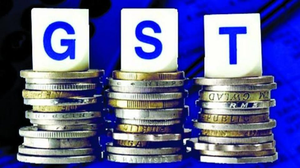




The 56th Meeting of the GST Council, chaired by the Union Finance & Corporate Affairs Minister, on September 3, 2025, has introduced a simplified GST structure with significant rate reductions across key sectors of trade and commerce. Essential industries such as leather, footwear, paper, textiles, handicrafts, toys, packaging, and logistics have been covered under this reform.
By lowering GST slabs to 5% on several goods and rationalising rates in transport and allied sectors, the reforms aim to reduce costs for consumers, ease compliance for traders, and enhance competitiveness for Indian businesses.
"When consumption increases, many goods that are produced at the MSME level will also see higher demand. This will benefit them as their business will grow. On the other hand, with the creation of two slabs, the compliance burden on MSMEs will be greatly reduced."- The Secretary General of ASSOCHAM, Mr. Manish Singhal

The key GST reductions across major sectors of trade and commerce are noted in the following segments.
Leather and Footwear

The leather and footwear sector is a key employer in India, with a strong export base. GST rationalisation here reduces the burden on manufacturers and makes products more accessible to consumers.
E-Commerce, Paper and Packaging
E-commerce is one of the fastest-growing sectors, heavily dependent on cost-effective packaging and logistics. GST reductions in this area lower costs for both businesses and consumers.
"It will be very beneficial for the industry as well, especially in the MSME sector, that due to the reduction in the tariff of GST, the demand in the local market will increase, people will be able to buy it easily, and because of that, the economy of India is more likely to be strong."- Vice President of Vilayat Industries Association, Mr. Harish Joshi
Wood Products
Agro-based and eco-friendly wood substitutes see lower taxation, encouraging sustainable manufacturing and MSME competitiveness.
Handicrafts
The handicrafts sector, vital for artisans and exports, benefits from tax rationalization, making traditional goods more affordable and globally competitive.
"Now, GST has brought a new golden age for both traders and consumers in our nation. From today, a golden era and a golden realm have also arrived for our traders and consumers."- Financial Advisor at Chamber of Commerce, Mr. Praveen Sahu
Commercial Goods Vehicles

As the backbone of India’s logistics, trucks and delivery vans benefit from GST cuts that lower transport and export costs.
Tractor Parts
India is one of the world’s largest tractor markets and this GST cut will push demand in both domestic and export segments. Agriculture-linked manufacturing sees a boost as tractors and their parts now attract lower GST, supporting both farmers and industry.
· Ancillary MSMEs making engines, tyres, hydraulic pumps, and spare parts will benefit from higher production. The GST Cut will also strengthen India’s positioning as a global tractormanufacturing hub.
Fruits, Vegetables & Food Processing
Agro-processing industries gain from reduced GST, promoting cold storage and reducing food wastage. Reduction of GST on most of the food items to 5% or NIL strengthens the entire food processing value chain from farmers to MSMEs, from retailers to exporters.
Textile

The GST rationalisation in textiles removes structural anomalies, reduces costs, boosts demand, supports exports, and sustains jobs. It will strengthen the entire textile value chain from fibre to garment, by reducing cost distortions. It will also correct anomalies at the fibre stage, reducing costs at yarn/fabric stage, boosting garment affordability, reviving demand at retail stage, and enhancing export competitiveness. This will give impetus to Fibre neutral policy.
Toys & Sports Goods
The toy industry, important for child development and MSME manufacturing, benefits from reduced GST.
Conclusion
“We had never thought that what PM Modi envisioned would be implemented so soon. The speed of implementation is key. This is a great incentive for the common man. This is a big step for the ease of doing business. The basic needs of the common man have been taken care of. This will give a huge boost to the economy." - President of the PHD Chamber of Commerce and Industry (PHDCCI), Mr. Hemant Jain
By lowering rates across industries such as leather, footwear, e-commerce, textiles, handicrafts, toys, agro-processing, and logistics, the government has reduced compliance costs, enhanced affordability for consumers, and improved margins for MSMEs. These measures not only ease the cost of doing business but also align with broader national priorities of promoting exports, supporting artisans and farmers, and encouraging sustainable manufacturing. Collectively, the reforms reinforce India’s growth trajectory by creating a more efficient, inclusive, and globally competitive tax framework.



